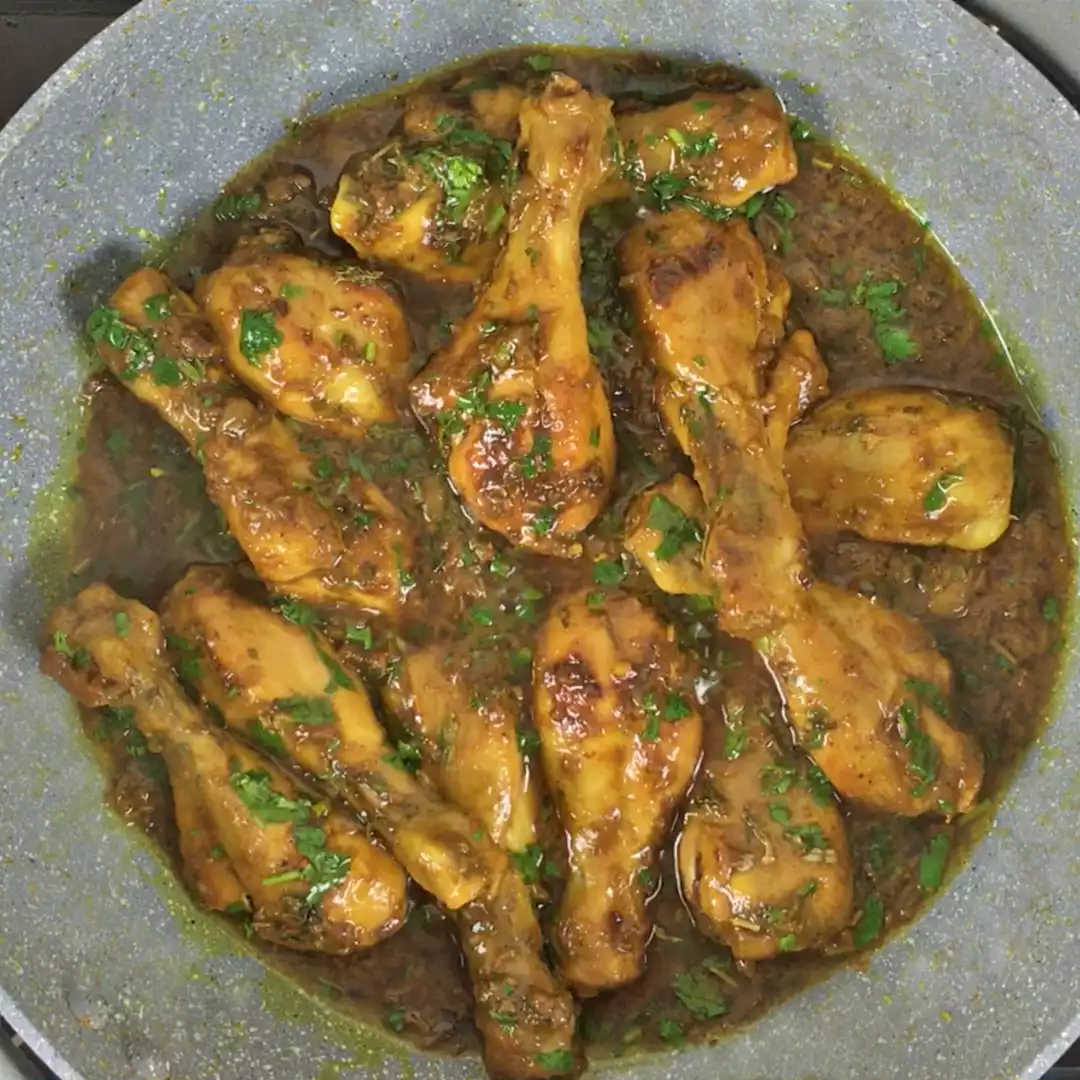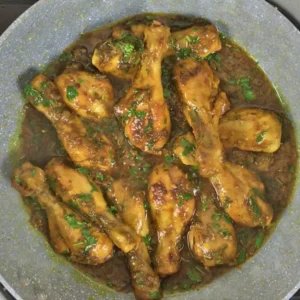
Originating from the heart of Indian kitchens, this recipe has been perfected over generations, making it a cherished favorite among food enthusiasts worldwide. Despite its exotic name, Chicken Masala is surprisingly easy to prepare, even for beginners in the kitchen.
With just a few simple ingredients and straightforward steps, you can recreate the authentic taste of this classic dish right in your own home.
Whether you’re cooking for a special occasion or simply craving a satisfying meal, Chicken Masala is sure to impress with its rich blend of spices and tender chicken drumsticks.
Get ready to elevate your cooking game as we dive into the world of Chicken Masala, where every bite is a burst of flavor and every meal is a celebration of good food and good company.
Expert Tip: Feel free to customize the spice level and ingredients according to your taste preferences. If you like it extra spicy, add more chili powder and green chilies.
Olive Oil: Olive oil provides a rich and smooth texture to the masala while also imparting a subtle fruity flavor. Its high smoke point makes it ideal for sautéing onions and tomatoes without burning, ensuring a perfectly balanced base for the dish.
Onions: Onions add a sweet and savory depth to the Chicken Masala, complementing the spices with their natural sweetness. When cooked until golden brown, they release their natural sugars, adding a caramelized richness to the dish.
Tomatoes: Tomatoes lend a vibrant color and tangy flavor to the masala, balancing the heat of the spices with their acidity. As they cook down, they create a luscious sauce that coats the chicken drumsticks, infusing them with irresistible flavor.
Chicken Drumsticks: Chicken drumsticks provide succulent and juicy meat that absorbs the flavors of the masala beautifully. Whether you’re using bone-in or boneless drumsticks, they add a hearty texture to the dish, making each bite a satisfying experience.
Chilli Powder, Turmeric Powder, Garam Masala, Salt: Chilli powder adds a fiery kick, turmeric powder offers a vibrant hue, garam masala brings a fragrant aroma, and salt enhances the overall flavor, ensuring a well-balanced and aromatic Chicken Masala.
Garlic Paste: Garlic adds a pungent and robust flavor to the masala, infusing it with its distinctive aroma. The paste form ensures even distribution of garlic flavor throughout the dish, enhancing its overall taste profile.
Green Chillies: Green chillies provide a fresh and spicy kick to the Chicken Masala, adding brightness and heat to the dish. Finely chopped, they contribute to the masala’s bold and zesty flavor profile, making it a memorable culinary experience.
Cumin Seeds: Cumin seeds offer a nutty and earthy flavor to the masala, complementing the other spices with their warm and aromatic notes. When crushed and added to the dish, they release their essential oils, intensifying the overall taste and aroma.
Dried Fenugreek Leaves: Also known as methi, dried fenugreek leaves add a subtle bitterness and herbaceous aroma to the masala, balancing the richness of the other ingredients. When crushed and sprinkled over the dish, they impart a distinctive flavor that elevates the Chicken Masala to new heights.
Coriander: Fresh coriander leaves, also known as cilantro, add a burst of freshness and color to the Chicken Masala, enhancing its visual appeal and flavor profile. Chopped and sprinkled as a garnish, they provide a refreshing contrast to the rich and spicy masala, making each bite a delight for the senses.
Expert Tip: Don’t rush the cooking process. Allow the onions and tomatoes to cook down until they are soft and caramelized, as this will create a rich and flavorful base for the masala.
Expert Tip: For an extra depth of flavor, marinate the chicken drumsticks in yogurt and a blend of spices such as ginger, garlic, and lemon juice for at least 30 minutes before cooking.
Yes, you can definitely use boneless chicken pieces such as thighs or breast for this recipe. Just adjust the cooking time accordingly as boneless chicken tends to cook faster than drumsticks.
Absolutely! Chicken Masala actually tastes even better when the flavors have had time to meld together. You can make it ahead of time and store it in an airtight container in the refrigerator for up to 2-3 days. Simply reheat it gently on the stovetop or in the microwave before serving.
The level of spiciness in Chicken Masala can be adjusted to suit your taste preferences. If you prefer a milder version, you can reduce the amount of chili powder and green chilies used in the recipe. Conversely, if you like it extra spicy, feel free to increase the amount of chili powder and green chilies.
Yes, you can freeze Chicken Masala for longer storage. Allow it to cool completely before transferring it to a freezer-safe container or zip-top bag. It can be stored in the freezer for up to 2-3 months. Thaw it overnight in the refrigerator before reheating it on the stovetop or in the microwave.
While rice and naan are classic accompaniments to Chicken Masala, you can also serve it with other grains such as quinoa or couscous for a healthy twist. Additionally, roasted vegetables or a side salad make excellent options for a lighter meal. Get creative and experiment with different side dishes to find your perfect pairing!
Here are some more recipes for you to enjoy! If you my recipes don’t forget to rate and leave a comment.
If you have any recipe suggestions, please do not hesitate to ask me. A great way to stay in contact with me is through Instagram, Facebook, Twitter and YouTube. Don’t forget to tag me @CookwithNabeela in your recipe photos!

Subscribe now to receive my latest recipes directly in your inbox. Stay up-to-date and never miss out!

I love to cook! I want to share with you my favourite, delicious family-friendly recipes. I want to inspire you to create fantastic food for your family every day.
Latest comments (2)
Best in the game
Thank you!